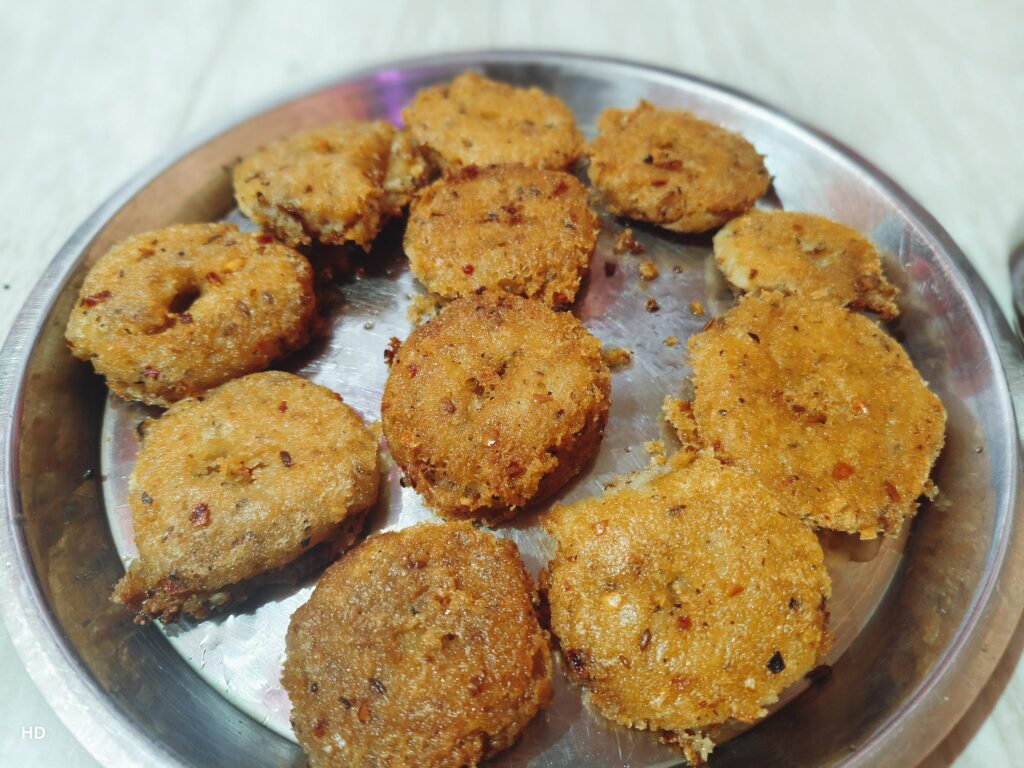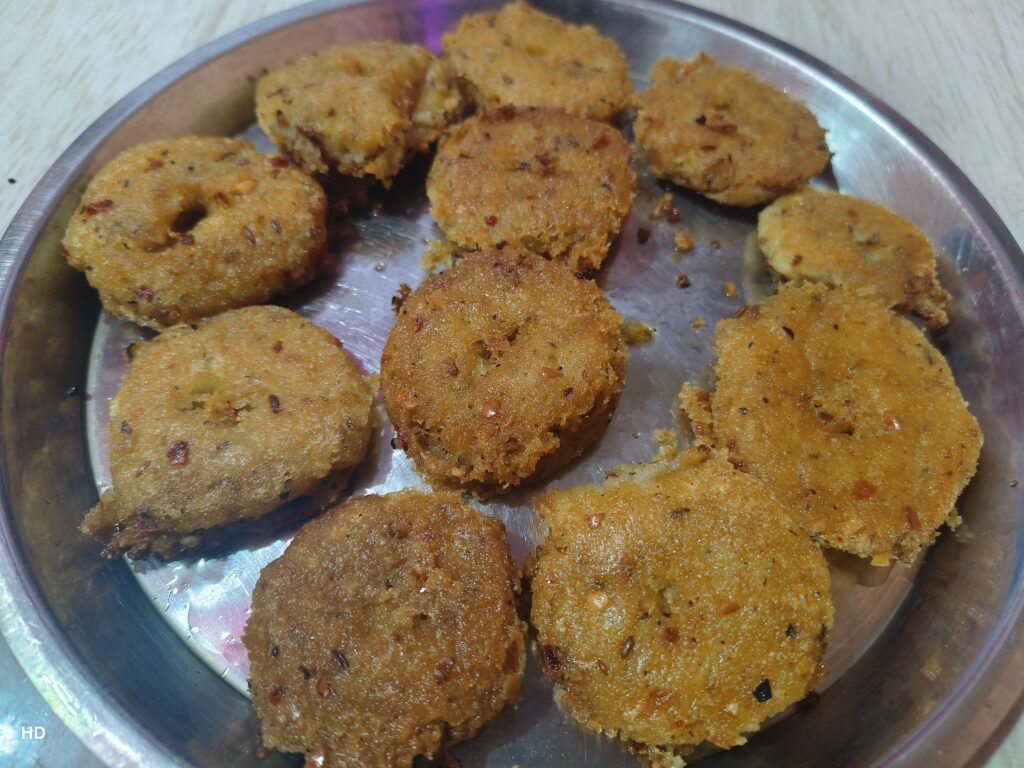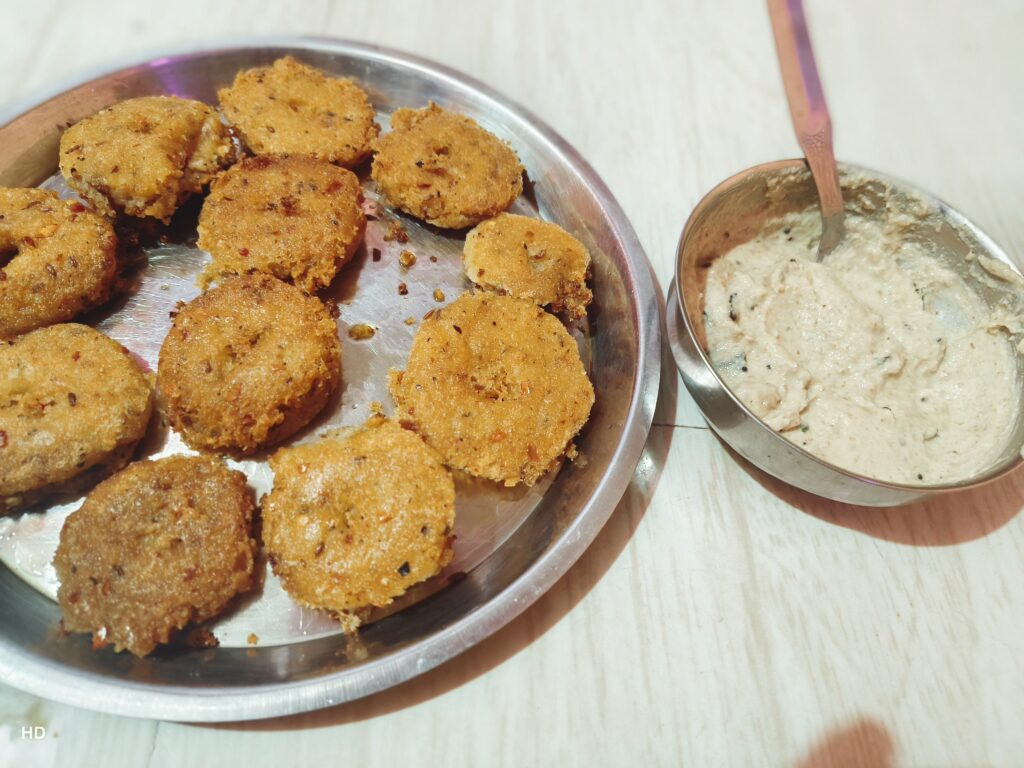Homemade Special Daal Bora/Vada Recipe – A Complete Guide
Food is not just about filling our stomachs; it’s about connecting with tradition, flavors, and memories. One such dish that holds a special place in Indian households is Daal Boda/Vada, also known as “Parippu Vada” in Kerala, “Masala Vada” in Tamil Nadu, “Chana Dal Vada” in Andhra and Telangana, and “Daal Bora” in Bengal. These crispy golden fritters made from lentils are a timeless snack that can turn any tea-time into a celebration.
Daal vadas are crunchy on the outside, soft inside, and loaded with flavors from lentils, onions, chilies, ginger, and spices. Whether served during monsoons with a hot cup of tea or offered as a festive snack, daal vadas never fail to win hearts.
In this article, we’ll dive deep into the homemade daal bora/vada recipe—covering its history, types, ingredients, step-by-step preparation, variations, cooking tips, and serving suggestions. By the end, you’ll have not just a recipe, but also an appreciation for why daal vadas are so beloved across India.
1. The Cultural Significance of Daal Bora/Vada
Every region in India has its own version of lentil fritters. In South India, masala vadas are common during festivals and temple offerings. In Kerala, parippu vada is a staple evening snack, especially during the rainy season. In Bengal, daal boras are prepared during Nabami (Durga Puja) and other occasions.
These fritters symbolize community, warmth, and togetherness. The sound of hot oil crackling as vadas are fried, the aroma of onions and spices blending with lentils, and the joy of sharing them with family members make the dish more than just food—it becomes an experience.

2. Ingredients Required for Homemade Daal Bora/Vada
The beauty of daal vada lies in its simplicity. Most of the ingredients are easily available in an Indian kitchen.
Main Ingredients:
- Chana Dal (Bengal Gram) – 1 ½ cups (soaked for 3–4 hours)
- Onion – 1 medium, finely chopped
- Green Chilies – 2–3, finely chopped
- Ginger – 1 inch, grated or chopped
- Garlic – 4–5 cloves (optional, depending on preference)
- Curry Leaves – 8–10 leaves, chopped (enhances flavor)
- Coriander Leaves – 3 tablespoons, chopped
- Dry Red Chilies – 2 (for grinding with dal, optional)
- Fennel Seeds – 1 teaspoon
- Salt – as required
- Oil – for deep frying
3. Step-by-Step Recipe for Daal Bora/Vada
Step 1: Soaking the Lentils
- Wash the chana dal thoroughly in running water.
- Soak it in enough water for at least 3–4 hours (overnight soaking is even better if you want super crisp vadas).
- Drain the water completely before grinding.
Step 2: Grinding the Daal
- Take the soaked chana dal in a blender.
- Grind it coarsely without adding too much water. A coarse texture gives vadas their signature crunch.
- Reserve 2–3 tablespoons of soaked whole dal and mix it later for extra crispiness.
Step 3: Preparing the Bora/Vada Mixture
- Transfer the ground dal to a mixing bowl.
- Add chopped onions, green chilies, curry leaves, ginger, garlic, and coriander leaves.
- Mix in fennel seeds (they add a subtle aroma).
- Add salt as per taste.
- Mix everything well. The mixture should hold together without being watery. If it feels too wet, add a tablespoon of rice flour or besan.
Step 4: Shaping the Boras/Vadas
- Wet your palms with a little water or oil.
- Take a small ball of mixture and flatten it gently to form a disc.
- Keep the thickness medium—not too thick, not too thin.
Step 5: Frying the Boras/Vadas
- Heat oil in a deep frying pan on medium flame.
- Once the oil is hot, gently slide the vadas in.
- Fry 4–5 vadas at a time depending on pan size.
- Keep flipping until they turn golden brown and crispy.
- Remove onto paper towels to absorb excess oil.
Step 6: Serving
Serve hot with coconut chutney, green chutney, or simply with a cup of masala tea.
Your homemade crispy daal boras/vadas are ready!
4. Tips for Perfect Daal Bora/Vada
- Texture is Key: Don’t grind dal too smooth; coarse grinding ensures crunch.
- Onions Last: Add onions just before frying, else the mixture will release water.
- Oil Temperature: Maintain medium heat. Too hot oil burns vadas; too cold oil makes them greasy.
- Extra Crispiness: Add a spoon of rice flour to the mixture.
- Flavor Boost: Fennel seeds and curry leaves add authentic South Indian flavor.

5. Variations of Daal Boda/Vada
1. Masala Vada (Tamil Nadu Style):
- Uses chana dal, onions, dry red chilies, and curry leaves.
- Spicy and aromatic, often served in tiffin centers.
2. Parippu Vada (Kerala Style):
- Usually made with a mix of toor dal and chana dal.
- A tea-time favorite, especially during monsoons.
3. Andhra Chana Dal Vada:
- Very spicy with green chilies and ginger.
- Often paired with coconut chutney.
4. Bengali Daal Bora:
- Softer version, sometimes made with moong dal.
- Often served with rice and dal as a side dish.
5. Moong Dal Vada:
- A lighter version made with yellow moong dal.
- Less oily, great for those who prefer mild flavors.
6. Health Benefits of Daal Bora/Vada
While daal vadas are deep-fried, they still offer nutritional benefits because they are made from lentils.
- Protein-Rich: Lentils are an excellent source of plant-based protein.
- Fiber Content: Helps in digestion and keeps you full longer.
- Iron and Minerals: Boosts energy and supports overall health.
- Balanced Snack: When paired with chutney, it becomes both filling and wholesome.
Of course, moderation is key, since frying adds calories. But compared to processed snacks, daal vadas are a healthier choice.
7. When and How to Serve Daal Boras/Vadas
- Evening Snack: Perfect with masala chai during rains or winters.
- Festivals: Commonly prepared during festive occasions and pujas.
- Breakfast: In South India, masala vadas are sometimes served with idli, dosa, or pongal.
- Travel Snack: They stay crisp for a few hours, making them ideal for road trips.
- Party Starter: Serve with chutneys or dips as a crispy starter for guests.
8. Common Mistakes to Avoid
- Adding too much water while grinding: Makes mixture loose and hard to shape.
- Overcrowding the pan: Lowers oil temperature and makes vadas soggy.
- Skipping curry leaves: They add a unique flavor—don’t miss them.
- Grinding too smooth: Results in soft vadas instead of crunchy ones.
- Not soaking dal enough: Leads to uneven grinding and undercooked taste.
9. Why Homemade Daal Boras/Vadas Feel Special
Daal vadas sold in restaurants or stalls are tasty, but homemade versions always feel more comforting. At home, you can:
- Adjust spice levels as per your taste.
- Use fresh ingredients for better flavor.
- Experiment with different dals and spices.
- Ensure hygiene and quality oil for frying.
Homemade daal boras/vadas taste more personal, almost like a warm hug in the form of food.
Also Read: Homemade Special Pasta Recipe
10. Final Thoughts
The homemade daal Boda/Vada recipe is proof that simple ingredients can create extraordinary dishes. All you need is lentils, onions, chilies, and a few spices, and you get a crunchy, flavorful snack loved by all generations.
Whether you call it daal vada, masala vada, parippu vada, or daal bora—the essence remains the same: crispy outside, soft inside, and full of love. Pair it with chutney, tea, or even rice, and you have a dish that can brighten any day.
So, the next time you’re craving a snack, skip the packaged chips and namkeens. Soak some lentils, chop some onions, and fry up a batch of golden daal vadas. With the aroma filling your kitchen and the taste melting in your mouth, you’ll realize why this humble dish has stood the test of time.
Homemade daal vadas are not just food—they are nostalgia, comfort, and tradition served on a plate.
For more updates – Please follow this blog!



Pingback: Homemade Bengali-Style Ilish Fish Recipe - HotLiveNews9